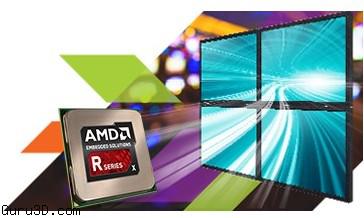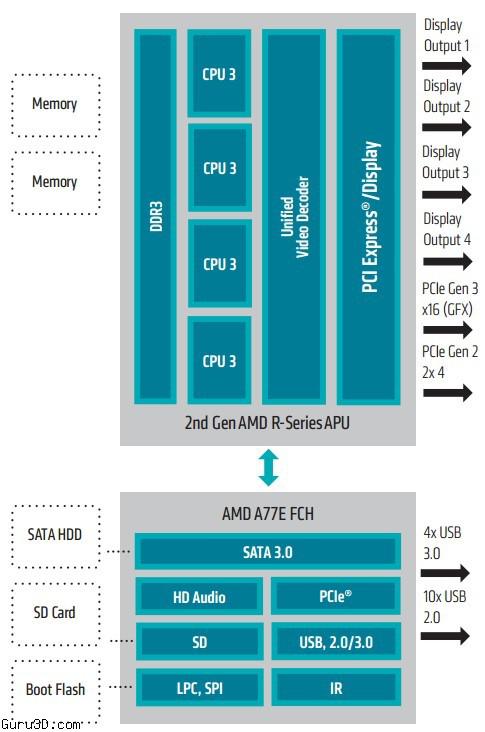AMD today announced the 2nd generation AMD Embedded R-series accelerated processing unit (APU) and CPU family (previously codenamed "Bald Eagle") for embedded applications. The new solutions are targeted at gaming machines, medical imaging, digital signage, industrial control and automation (IC&A).
Communications and networking infrastructure that require industry-leading compute and graphics processing technology. "When it comes to compute performance, graphics performance and performance-per-watt, the 2nd generation AMD Embedded R-series family is unique in the embedded market," said Scott Aylor, corporate vice president and general manager, AMD Embedded Solutions. "The addition of HSA, GCN and power management features enables our customers to create a new world of intelligent, interactive and immersive embedded devices."
Industry-First Features, Benefits and Support
- Heterogeneous System Architecture (HSA): The 2nd generation AMD Embedded R-series APU is the first embedded processor to incorporate HSA features, enabling applications to distribute workloads to run on the best compute element -- e.g., CPU, GPU or a specialized accelerator such as video decode -- for up to 44 percent more 3-D graphics performance and up to 46 percent more compute performance than comparable Intel Haswell Core-i CPUs.
- Open-source Linux development: As a gold-level member of the Yocto Project, a Linux Foundation Collaboration Project, and as part of a recent multiyear agreement with Mentor Graphics, embedded systems developers now have access to customized embedded Linux development and commercial support on the 2nd generation AMD Embedded R-series family through Mentor Embedded Linux and Sourcery CodeBench, as well as Mentor Embedded Linux Lite available at no cost.
- Embedded-specific features: The 2nd generation AMD Embedded R-series family is specifically designed for embedded applications with industry-leading, 10-year longevity, dual-channel memory with error-correcting code (ECC), DDR3-2133 support and configurable TDP for system design flexibility to optimize the processor at a lower TDP.
Target Markets
Visual Embedded: For embedded applications like gaming machines and digital signage that provide immersive and interactive visual experiences, AMD customers can achieve up to 64 percent more 3-D graphics performance than a standalone 2nd generation AMD Embedded R-series APU4, and greater flexibility and scalability with support for up to nine independent displays and 4K resolution with the combination of the newly launched AMD Embedded Radeon E8860 discrete GPU.
Medical Imaging: The 2nd generation AMD R-series APU is also ideal for clinical and field medical imaging applications across portable, 3-D and 4-D ultrasound, low-dose X-ray, and imaging-assisted surgical systems. The new AMD Embedded R-series APUs deliver high image transformation performance and low latencies in a low-power and highly integrated solution for medical imaging device vendors looking to help reduce size, weight, complexity and system cost. The combination of high compute performance and low memory access latency afforded by hUMA, as well as high graphics performance in the 2nd generation AMD Embedded R-series platform accelerate image transformation and deliver excellent image rendering to enable next-generation ultrasound applications to help diagnose and treat patients.
Communications and Networking Infrastructure: For non-visual applications, the advanced parallel-compute graphics engine in the 2nd generation AMD Embedded R-series APU provides a highly unique heterogeneous compute platform for control plane switching and routing applications. With up to 66 percent more compute performance than the previous generation AMD Embedded R-series APU,5 the high-performance GPU enables acceleration of parallelizable functions such as deep packet inspection, encryption or decryption, search, and compression or decompression allowing more CPU headroom for customers to help increase feature velocity.
For more information, visit the product page.
.jpg)



